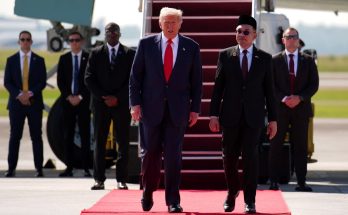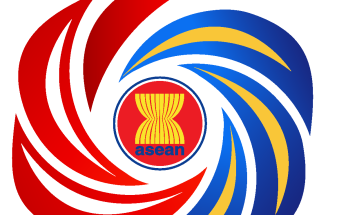The 16th NAM summit in Tehran was touted as a diplomatic coup by a sanctions-hit Iran to fight back its international isolation. But amid all that Iranian public relations hoopla and high-voltage photo-ops, India managed to inject some economic and strategic content into a movement scorned by many as a relic of the Cold War era.
The 120-nation NAM summit generated more buzz and stole international headlines than the last few summits for the simple reason that Tehran, a pariah regime for the West, was hosting the summit. Despite threatening noises emanating from Washington, around 30 heads of state and government managed to make it to Tehran.
Clearly, the host Iran was the star of the show, but there were competing attractions as well. Indian Prime Minister Manmohan Singh and the newly-elected Egyptian President Mohammed Morsi, the leaders of the two founding members of the NAM, shared the dais with Iranian President Mahmoud Ahamdijehad, a photo-op that the Iranian PR machinery milched to the hilt to tell the world it still has a few powerful friends.
But PR tricks apart and high rhetoric that resonates in the NAM summit, Manmohan Singh, who is often accused of drifting into the Washington camp on the back of a landmark nuclear deal, unveiled a new vision of a reinvigorated NAM amid a shift of power from “the West to the rest.”
India’s effort, said a senior official closely involved with the summit, was to revive the NAM as a preeminent forum to project the developing world’s collective stand on international issues and to enable the movement to map out new pathways of collaboration on issues like food security that impinges directly on the lives of millions in these countries.
Manmohan Singh’s address at the Tehran summit Aug 30 reflected this new emphasis to elevate the NAM’s global profile amid the emergence of new power groupings like the BRICS and the G20 which have diminished the importance of the grouping.
India’s focus, said the official, was to rally the 120-nation grouping around issues that unite and cement new bonds of solidarity among countries of the global south, and not divide the NAM.
Compared to that, Iranian Supreme Leader Ayatollah Ali Khamenei inaugurated the summit with a diatribe against the West for persecuting Iran for its nuclear programme and the Egyptian president, the outgoing chair of the NAM, spoke about Syria and backed the opposition in the violence-torn West Asian nation. Both the Iranian nuclear programme and the Syria crisis are deeply divisive and contentious issues.
Manmohan Singh instead focussed on cross-cutting issues like terrorism, proliferation of weapons of mass destruction, the menace of maritime piracy, the growing threat to cyber security. He chose the deficit in global governance as a key theme and plank for a rejuvenated NAM which comprises two-third members of the UN General Assembly.
“Our movement should take the lead in building global governance structures that are representative, credible and effective,” he said while pushing for reform of institutions such as the United Nations Security Council, the World Bank and the IMF.
High rhetoric apart, India sought to put issues of sustainable development and kindred issues such as food security and energy security at the heart of the NAM agenda which were reflected in the Tehran Declaration, said an official.
But it wasn’t just high-sounding diplomatese that emanated from Tehran. From the Iranian capital, Manmohan Singh, for one, sent a subtle but clear message to Washington that it can’t be bullied into abandoning a friendly country which is not only important for India’s energy security but also for its civilisational links as well as its strategic interests in Afghanistan and Central Asia.
The assertion of India’s strategic autonomy, a core principle of non-alignment, was not lost on anyone after the Indian prime minister spent an hour and 40 minutes talking separately with Ahmadinejad and Iran’s supreme leader Ayatollah Khamenei.
Unlike the last two NAM summits in Havana (2006) and Sharm el-Sheikh (2009), the Tehran summit was refreshingly not hijacked by the leaders of the two prickly neighbours generating heated controversies back home.
The leaders of India and Pakistan met on the sidelines of the summit in a business-like manner, shunning grand rhetoric and painfully aware of the long journey they still have to traverse to bridge trust deficit that lies at the heart of an accident-prone relationship.
Author Profile

- Manish Chand is Founder and Editor-in-Chief of India Writes Network (www.indiawrites.org) and India and World, a pioneering magazine focused on international affairs. He is CEO, Centre for Global India Insights, an India-based think tank focused on global affairs.
Latest entries
 India and the WorldOctober 27, 2025Modi hails the century of India and ASEAN, backs ASEAN centrality
India and the WorldOctober 27, 2025Modi hails the century of India and ASEAN, backs ASEAN centrality India and the WorldOctober 26, 2025Act East: Five reasons why ASEAN summit in Malaysia matters
India and the WorldOctober 26, 2025Act East: Five reasons why ASEAN summit in Malaysia matters India and the WorldOctober 25, 2025Malaysia Summit: India can play a bigger role in ASEAN: Anil Wadhwa
India and the WorldOctober 25, 2025Malaysia Summit: India can play a bigger role in ASEAN: Anil Wadhwa India and the WorldOctober 2, 2025With US frowning, India to host Putin in December
India and the WorldOctober 2, 2025With US frowning, India to host Putin in December







